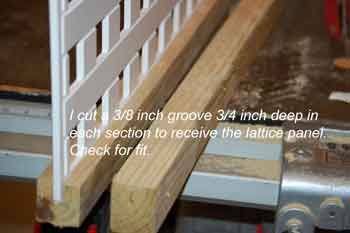

Remember the pilot hole needs to be smaller than the screw diameter you will use, otherwise screws will not hold. To do this, start by drilling a clearance hole through both ends of each of your battens to allow the screws to be installed more easily later.
DIY LATTICE FENCE COVERING A WALL FULL
If you're using batten corners instead of full length battens, position them very slightly inside the four-corner marks made for your trellis so they'll be hidden by trellis frame once installed.
DIY LATTICE FENCE COVERING A WALL INSTALL
For trellis more than 90cm wide, also install a central batten that will run down the middle of your trellis for extra stability. For a trellis less than 90cm wide you'll just need two battens - one between the wall and each of the outer verticals of the trellis frame.

Figure out how many battens you're going to need.The bottom of the trellis should be 30-45cm (1-1.5 feet) above ground level to prevent rotting and avoid breaching your damp proof course. Offer the trellis up to the wall in the desired position, check it is level and mark each of the four corners.An alternative is to use smaller pieces of wood in each corner as "batten corners". Ideally battens should be narrower than the trellis frame so they'll be hidden by the trellis once installed. They should be mounted on the wall vertically so that they do not restrict plant growth. Battens are long, narrow lengths of wood (cut to the same height as the trellis) that will be positioned between the outer frame of your trellis and the wall.Instead, use wooden "battens" to raise it at least 5cm (2 inches) from the wall surface, with the bottom 30-45cm (1-1.5 feet) above ground level to prevent rotting and avoid breaching your damp proof course. Don't secure the trellis flush against the wall as this will leave no room for your climbers to twine around it and prevent air circulation around your plants.Trellis help you cover a wall with climbing plants without worrying about them damaging the structure of the wall. Twiners don't grip directly onto stone or brick but will wind tendrils around a support. A trellis is a good option when growing twining climbers against a wall or fence.


 0 kommentar(er)
0 kommentar(er)
